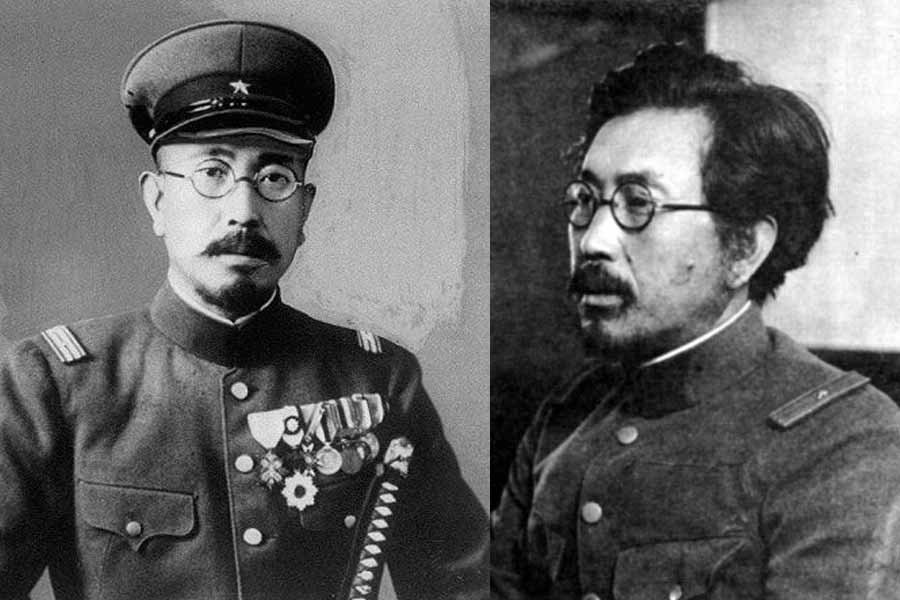Unit 731, also known as the “Epidemic Prevention and Water Purification Department of the Kwantung Army”, was a top-secret biological and chemical warfare research unit of the Imperial Japanese Army during World War II.
This unit, based in the Pingfang district of the city of Harbin in the northeast of China, was responsible for some of the most horrific and inhumane experiments ever conducted on human beings. Despite the fact that this unit’s existence and its brutal acts were known to the world, it remains one of the most covered-up and overlooked war crimes in history. In this article, we will examine the history, acts, and aftermath of Unit 731.
What Did Unit 731 Do?
Unit 731 was established in 1936 with the aim of developing and testing biological and chemical weapons for use in the Japanese army. The unit was comprised of a large number of scientists and medical personnel who conducted experiments on prisoners of war, as well as Chinese and Korean civilians. The prisoners, who were mostly from China and the Soviet Union, were subjected to brutal and inhumane experiments that included being infected with diseases such as bubonic plague, cholera, and anthrax, among others.

Some of these experiments involved the use of live human subjects, who were vivisected without anesthesia. The horrific experiments conducted by Unit 731 led to the death of thousands of people, who suffered unbearable pain and torture before their eventual death.
Expriements in Unit 731
Vivisection: Unit 731 conducted vivisection experiments on live prisoners, without anesthesia, to study the effects of various diseases on the human body.
Frostbite Experiments: The unit subjected prisoners to extreme cold to study the effects of frostbite and to develop treatments for frostbite.
Plague Testing: Unit 731 spread bubonic, cholera, and other diseases among the prisoners to study the progression of the diseases and to develop biological weapons.
Decapitation Experiments: Unit 731 conducted experiments to study the effects of rapid pressure changes on the human body, including beheading prisoners while they were still alive.
Gas Chamber Tests: The unit subjected prisoners to various toxic gases, including mustard gas, to study the effects and to develop chemical weapons.
Forced Infections: Unit 731 forcibly infected prisoners with diseases such as syphilis, gonorrhea, and cholera to study the progression of the diseases and to develop treatments.
Limb Amputation: Unit 731 conducted experiments to study the effects of limb amputation on the human body and to develop treatments for injuries sustained in battle.
Immersion Experiments: Unit 731 conducted experiments to study the effects of submersion in freezing water on the human body, including immersion in vats of ice water.
High Altitude Tests: The unit subjected prisoners to high-altitude tests to study the effects of high altitude on the human body, including experiments to determine the limits of human endurance.
Weapon Testing: Unit 731 conducted tests on live prisoners to evaluate the effectiveness of various weapons and tactics, including tests of flamethrowers, grenades, and poison arrows.
Who was Shiro Ishii?
Lieutenant General Shirō Ishii was the head of Unit 731 and a prominent figure in the Imperial Japanese Army. Ishii was responsible for the establishment of the unit and the brutal experiments conducted there, aimed at developing new weapons and tactics for the war.

He oversaw the day-to-day operations of Unit 731 and was responsible for the horrific treatment of prisoners and grotesque medical experiments. Despite the immense suffering caused by Unit 731, Ishii was never held accountable for his actions and died of throat cancer in 1959.
Did Any Prisoners Survive Unit 731?
While many prisoners died as a result of the horrific experiments conducted by Unit 731, a small number of prisoners survived their captivity. Some of these survivors have shared their stories of the brutal acts they were subjected to while in Unit 731, shedding light on the extent of the inhumane experiments that took place there. However, it is worth noting that many of the survivors have suffered from long-term physical and mental health issues as a result of their experiences.
How Many Victims Did Unit 731 Have?
Unit 731 primarily targeted Chinese civilians and military personnel, as well as Russian prisoners of war and Mongolians. It is estimated that between 3,000 and 12,000 people were subjected to the brutal experiments conducted by Unit 731, with the majority being prisoners of war, but also a significant number of Chinese and Korean civilians.
Why Was Unit 731 Covered Up?
Unit 731 was covered up by the Japanese government after the end of World War II. The Allies, including the United States, chose to overlook the brutal acts committed by Unit 731 in exchange for the data and information gathered during the experiments. This decision was made to prevent the spread of the knowledge of biological and chemical weapons to the Soviet Union. As a result, the leaders and personnel of Unit 731 were not held accountable for their war crimes, and many went on to lead successful careers in post-war Japan.
What happened to Unit 731 now?
Today, the site of Unit 731 in Harbin, China has been turned into a museum, which serves as a reminder of the atrocities committed there. The museum exhibits some of the tools and equipment used in the experiments, as well as testimonials from survivors and their families. In recent years, the Chinese government has called for greater recognition and compensation for the victims of Unit 731, but their demands have not been met by the Japanese government.












Follow Us